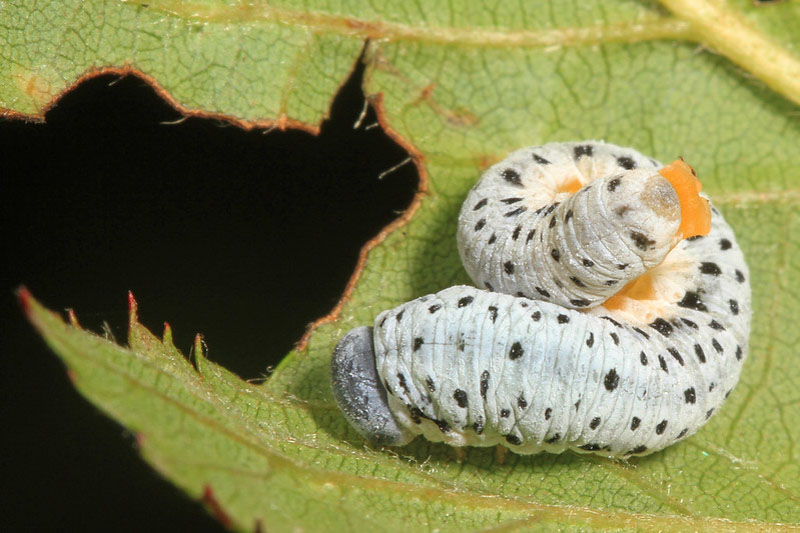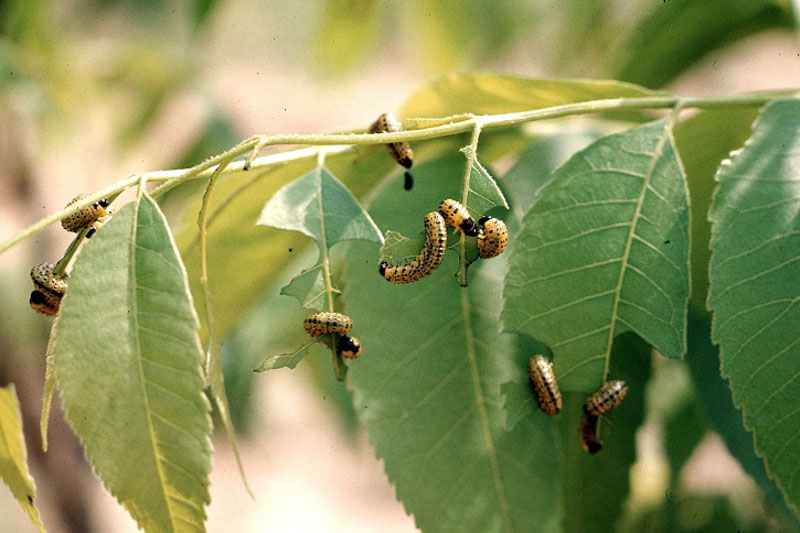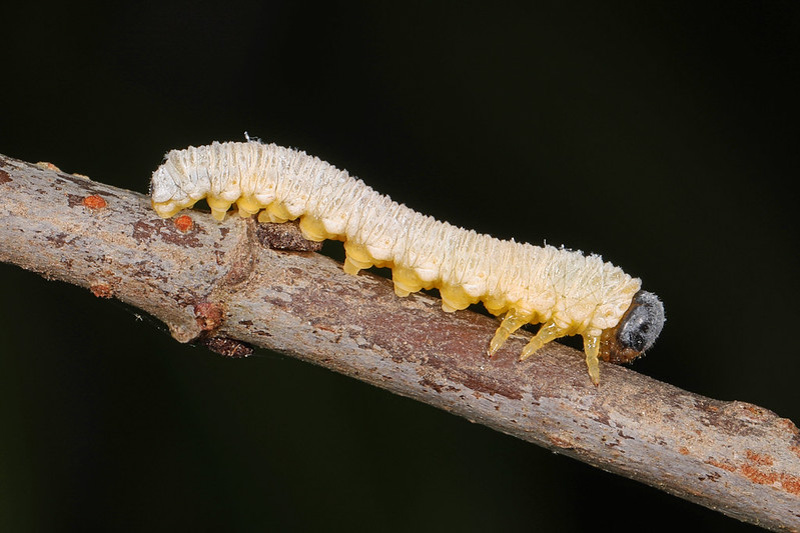While dogwood sawflies are a nuisance, they are not typically life-threatening to established, healthy dogwood trees. However, their presence should not be ignored.
The Dogwood Sawfly (Macremphytus tarsatus) is an insect that targets various species of dogwood trees and shrubs. A part of the Hymenoptera order, which includes bees, wasps, and ants, the sawfly poses a threat to dogwoods by consuming their leaves, causing aesthetic and potentially more serious damage.
Primarily, the dogwood sawfly targets Cornus species, such as red-twig dogwood (Cornus sericea), gray dogwood (Cornus racemosa), and flowering dogwood (Cornus florida). However, they have also been known to attack pagoda dogwood (Cornus alternifolia).
Dogwood sawflies are commonly found in the United States and Canada, particularly in regions where their host plants are abundant. This includes the Eastern and Midwestern United States, stretching from New England to the Great Lakes and even as far west as the Rocky Mountains.
Adult sawflies are wasp-like but without the narrow waist characteristic of wasps. They are generally black or dark grey with a body length of around 1/2 inch. The larvae resemble caterpillars and may have several different appearances in their various instar phases, ranging from a creamy white with a powdery, waxy coating to a yellow with black markings.

The life cycle of the dogwood sawfly typically follows an annual pattern, although this can vary depending on environmental factors like temperature and availability of host plants. Here is a general outline of the dogwood sawfly’s life cycle:

The dogwood sawfly primarily damages dogwood plants during its larval stage. The larvae feed voraciously on the leaves, often skeletonizing them by consuming the leaf tissue between the veins. In severe infestations, larvae can defoliate entire branches or even whole trees. Early signs of damage may include a lace-like appearance to the leaves. Eventually, affected leaves may brown, curl, and fall off. Although healthy, mature dogwood trees can typically tolerate some defoliation without long-term harm, young or stressed trees may experience reduced growth and vigor due to the feeding damage.
The first step in detecting a dogwood sawfly infestation is close visual inspection of your dogwood trees, mainly focusing on the leaves’ undersides where eggs and larvae are commonly found.
Watch out for leaves that are skeletonized or have a lace-like appearance, as this is a telltale sign of sawfly feeding. You may also notice small holes in the leaves, indicating that the larvae have started to feed.
If you’re still not sure if you’re dealing with a sawfly infestation, gently shake a branch over a white sheet of paper; the larvae should fall off and be easily identifiable.
By being proactive and regularly inspecting your dogwood trees, you can catch infestations early and manage them more effectively.

Create a membership account to save your garden designs and to view them on any device.
Becoming a contributing member of Gardenia is easy and can be done in just a few minutes. If you provide us with your name, email address and the payment of a modest $25 annual membership fee, you will become a full member, enabling you to design and save up to 25 of your garden design ideas.
Join now and start creating your dream garden!
Create a membership account to save your garden designs and to view them on any device.
Becoming a contributing member of Gardenia is easy and can be done in just a few minutes. If you provide us with your name, email address and the payment of a modest $25 annual membership fee, you will become a full member, enabling you to design and save up to 25 of your garden design ideas.
Join now and start creating your dream garden!